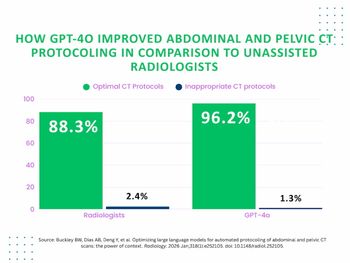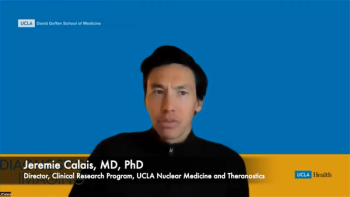Welcome to Diagnostic Imaging’s Weekly Scan. I’m senior editor Whitney Palmer, bringing you the most popular news of the week.
Before we get to our featured interview this week with Dr. Michael Recht, chair of the radiology department at New York University Langone Health, about the partnership between NYU and Facebook AI that has created an accelerated MRI that is four times as fast as a standard MRI – here are this week’s top stories.
In an about-face to the current guidelines for using chest CT for initial COVID-19 diagnosis, a team of investigators from France published a study in the journal Radiology that shows CT can be used as a first-line tool to detect viral infection. Although the lab test RT-PCR has been the gold standard for diagnosis, it has some drawbacks – mainly, the timing needed to get results. To determine the efficacy of using chest CT, the team examined CT scans from 4,824 asymptomatic patients from 26 hospital radiology departments. The scans were captured between March 2, 2020, and April 24, 2020 – a time frame that corresponds to the height of the pandemic in France. Roughly 53 percent of patients were COVID-19-positive. Based on the patient’s final diagnosis from the hospital discharge report, chest CT sensitivity and specificity were 90 percent and 91 percent, respectively. The test also determined the negative predictive value at final diagnosis for patients with both negative chest CT and RT-PCR results was 99 percent. Based on these results, the team said, chest CT should be considered as an initial diagnostic tool, particularly in areas of high disease prevalence.
As we’re continuing to learn more about how best to image patients suspected of COVID-19 infection, the picture of how the virus affects the brain is also continuing to emerge. New research published in Academic Radiology from a team of investigators from the University of California at San Francisco, shows that patients experience certain neurological impacts that are visible on imaging based upon the severity of their disease. Knowing what to look for can be particularly helpful with patients who are either asymptomatic or who have mild cases as it will help providers identify which patients should be isolated. To determine which neurological impacts appear in which patients, the team analyzed CT and MRI scans from 711 patients published in 61 published studies. Among the 670 patients who have severe infection, the team most often identified white matter abnormalities, ischemic infarct, and cerebral hemorrhage. Among the 41 patients with mild disease, they pinpointed cranial nerve abnormalities – most of which were in the olfactory tract – cerebral infarction, and white matter abnormalities. Ultimately, they said, these myriad of neurological symptoms could impact patients along the entire spectrum of disease, making it all the more important for radiologists to be aware of these manifestations.
And, as the pandemic continues to linger, stress levels among radiologists also stay high. Even though most radiologists nationwide feel their institutions and their leadership have done an acceptable and appropriate job in responding to the crisis, the majority of you still report feeling significant levels of anxiety. In fact, in the journal Clinical Radiology, a team from the University of Southern California Keck School of Medicine revealed the results of a study they conducted with 689 radiologists from 44 states. Based on the responses they received to a 43-question survey, they discovered 61 percent of radiologists report a 7 out of 10 anxiety level. There were three stressors that were mentioned most often: 71 percent mentioned family health, 47 percent said personal health, and 33 percent pointed to financial concerns. Fortunately, survey respondents also indicated they had several ways to decompress. When they weren’t interpreting scans or sitting in virtual meetings, they said they relaxed by spending time with their families and exercising, as well as watching television, reading, and talking with friends.
And, finally this week, Diagnostic Imaging spoke with Dr. Michael Recht, chair of the NYU Langone Health radiology department, about the institution’s partnership with Facebook AI. To date, the collaboration has produced MRI images that are of the same diagnostic quality as standard MRI images – but they are captured four times as fast. Yes, that means they can conduct a 5-minute MRI knee scan that is virtually indistinguishable from a scan that takes much longer. Dr. Recht not only discussed the partnership, but how the team successfully reached this point, and what the next steps could be. Here’s what he had to say.





























